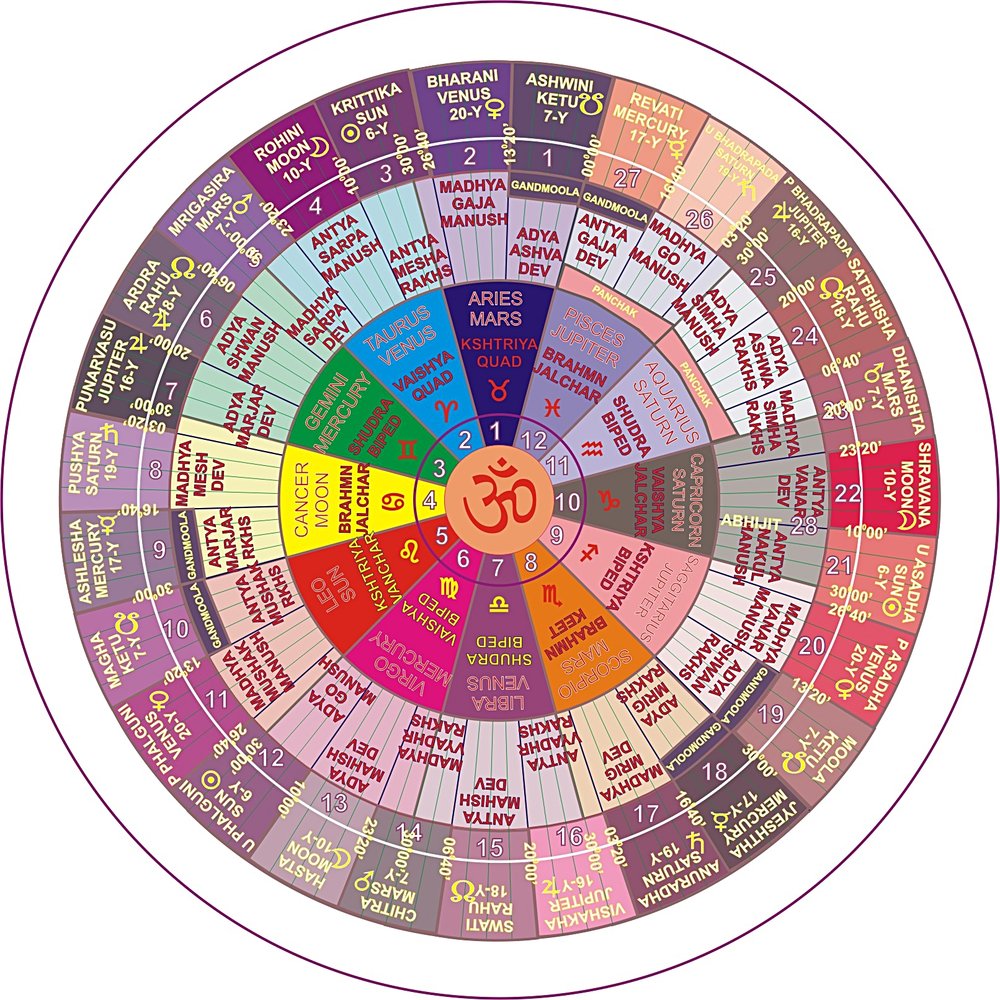Palmistry
Have you ever looked at your hand and wondered if there was more to it than just skin and bones? Have you ever wished you could understand the secrets of your life, your personality, and your destiny? If so, then this book is for you.
Palmistry, or hand reading, is an ancient art that has been practiced for thousands of years. It is based on the belief that the lines, shapes, and markings on our hands can reveal a great deal about our lives and personalities.
In this book, you will learn the basics of palmistry, including the history and anatomy of the hand, the major and minor lines, the mounts of the hand, the fingers and their meanings, and the hand shapes and their significance. You will also learn how to read your own and someone else’s palm, and how palmistry is practiced in different cultures worldwide.
Whether you are a curious beginner or an experienced practitioner, this book will provide you with the tools and knowledge you need to unlock the secrets of your own hand and the hands of those around you.
Introduction to Palmistry
Palmistry, also known as chiromancy or hand reading, is the practice of interpreting the lines, shapes, and markings on a person’s hand in order to gain insight into their personality, character traits, and life events. The art of palmistry has been practiced for thousands of years and can be traced back to ancient civilizations in India, China, and Egypt.
In palmistry, each hand is divided into four sections: the palm, the fingers, the thumb, and the wrist. The palm is further divided into different areas, each with its own significance. The major lines in palmistry include the life line, the head line, and the heart line, while the minor lines include the fate line, the sun line, and the mercury line. The mounts of the hand, which are the fleshy pads on the palm, are also important in palmistry.
Palmistry is based on the principle that the hand is a reflection of the mind and the body. The lines on the hand are said to change over time, depending on a person’s thoughts, emotions, and experiences. By studying these lines, a palmist can gain insight into a person’s past, present, and future.
In the following chapters, we will explore the history of palmistry, the anatomy of the hand, and the major and minor lines in more detail. We will also learn about the mounts of the hand, the fingers, and the hand shapes, and how to read your own palm and someone else’s palm.
History of Palmistry
The practice of palmistry can be traced back to ancient civilizations such as India, China, and Egypt. In India, palmistry was known as “hasta samudrika shastra,” which means the “science of hand-reading.” It was believed that the lines on the hand were a reflection of a person’s karma and that by understanding these lines, a person could gain insight into their future.
In China, palmistry was also a popular practice, and it was believed that the lines on the hand were a reflection of a person’s energy or chi. Palmistry was also practiced in ancient Egypt, where it was believed that the lines on the hand were a reflection of a person’s destiny.
During the Middle Ages, palmistry became a popular practice in Europe, and many books were written on the subject. Palmistry was also a popular practice in the Arab world, where it was known as “falak al-kaff” or the “science of the hand.”
In the 19th century, palmistry experienced a resurgence in popularity in Europe and America. Many people believed that the lines on the hand could reveal a person’s character and personality, and palmists became popular entertainers at parties and gatherings.
Today, palmistry is still a popular practice around the world, and many people use it as a tool for self-discovery and personal growth.
Anatomy of the Hand
In order to understand palmistry, it is important to have a basic understanding of the anatomy of the hand. The hand is made up of the palm, the fingers, the thumb, and the wrist.
The palm is the fleshy area on the underside of the hand, and it is divided into four main areas: the mounts, the major lines, the minor lines, and the skin texture.
The fingers are the long, slender parts of the hand that are used for gripping and manipulating objects. There are five fingers on each hand, and each finger is divided into three sections: the phalanges.
The thumb is the short, stout digit that is located on the side of the hand opposite the fingers. The thumb is opposable, which means it can be used to touch and grasp objects.
The wrist is the joint that connects the hand to the forearm. It is made up of eight small bones called carpals.
In palmistry, each area of the hand has its own significance, and by understanding the anatomy of the hand, a palmist can gain a deeper understanding of a person’s personality and life events.
Major Lines in Palmistry
The major lines in palmistry are the life line, the head line, and the heart line. These lines are the most prominent lines on the palm, and they are believed to reveal a great deal about a person’s character and life events.
The life line is the line that runs from the edge of the palm above the thumb and down towards the wrist. It is believed to reveal a person’s physical health, vitality, and life expectancy.
The head line is the line that runs from the base of the palm, just above the life line, and across the center of the palm towards the outer edge. It is believed to reveal a person’s intellectual abilities, communication skills, and creative potential.
The heart line is the line that runs from the edge of the palm below the pinkie finger and across the center of the palm towards the outer edge. It is believed to reveal a person’s emotional nature, romantic relationships, and capacity for love.
By studying the major lines in a person’s palm, a palmist can gain insight into their personality, character traits, and life events.
Minor Lines in Palmistry
In addition to the major lines, there are also minor lines in the palm that are believed to reveal additional information about a person’s personality and life events. These lines can be found throughout the palm and can vary in size and shape.
Some of the most common minor lines include the fate line, the sun line, the mercury line, and the intuition line.
The fate line, also known as the career line, is a vertical line that runs up the center of the palm towards the middle finger. It is believed to reveal a person’s career path and level of success.
The sun line, also known as the Apollo line, is a vertical line that runs up the palm towards the ring finger. It is believed to reveal a person’s creativity, artistic talent, and success in the arts.
The mercury line is a line that runs from the base of the palm, near the wrist, and up towards the little finger. It is believed to reveal a person’s communication skills, business acumen, and financial success.
The intuition line is a line that runs parallel to the life line and is located on the opposite side of the palm. It is believed to reveal a person’s intuition, psychic abilities, and spiritual development.
By studying the minor lines in a person’s palm, a palmist can gain a more detailed understanding of their personality, strengths, and weaknesses.
Palmistry Techniques
There are several techniques that palmists use to read a person’s palm. One of the most common techniques is to look at the shape of the hand. There are four main hand shapes in palmistry: earth, air, fire, and water. Earth hands are characterized by square palms and short fingers, and they are believed to represent practical, grounded individuals. Air hands are characterized by square palms and long fingers, and they are believed to represent intellectual, analytical individuals. Fire hands are characterized by long palms and short fingers, and they are believed to represent passionate, energetic individuals. Water hands are characterized by long palms and long fingers, and they are believed to represent sensitive, intuitive individuals.
Another technique used in palmistry is to look at the lines on the palm. Palmists look at the length, depth, and placement of the lines to gain insight into a person’s personality and life events.
Palmists may also look at the mounts on the palm. The mounts are fleshy areas on the palm that are associated with different qualities and characteristics. For example, the mount of Jupiter is associated with leadership and ambition, while the mount of Venus is associated with love and relationships.
By using a combination of these techniques, palmists can gain a deeper understanding of a person’s personality, character traits, and life events.
How to Read Your Own Palm
While it is best to have a professional palmist read your palm, there are some basic techniques that you can use to read your own palm.
Start by examining the shape of your hand. Look at the length and shape of your fingers, the size and shape of your palm, and the overall shape of your hand. Compare your hand to the four main hand shapes: earth, air, fire, and water. This can give you a basic understanding of your personality traits and strengths.
Next, examine the major lines in your palm. Look at the length, depth, and placement of the life line, the head line, and the heart line. This can give you insight into your physical health, intellectual abilities, and emotional nature.
Finally, examine the minor lines in your palm. Look at the fate line, the sun line, the mercury line, and the intuition line. This can give you insight into your career path, creative potential, communication skills, and spiritual development.
While reading your own palm can be helpful, it is important to keep in mind that it is not a substitute for a professional reading. A professional palmist has years of experience and training in interpreting the lines and markings on a person’s palm and can provide a much more detailed and accurate reading.
The History of Palmistry
Palmistry has been practiced for thousands of years in many cultures around the world. The earliest known evidence of palmistry dates back to ancient India, where it was practiced by Hindu astrologers.
In China, palmistry was known as “cheiromancy” and was first mentioned in the Book of Changes, a Chinese divination text that dates back to the 9th century BC.
In ancient Greece, palmistry was practiced by the philosopher Aristotle and was also mentioned in the writings of Hippocrates.
During the Middle Ages, palmistry became a popular practice in Europe, and many books were written on the subject. In the 17th century, a Frenchman named Casimir Stanislaus D’Arpentigny developed a system of palmistry that included the analysis of the shape of the hand.
Today, palmistry is still practiced around the world, and many people find it to be a fascinating and insightful way to gain a deeper understanding of themselves and others.
The Science of Palmistry
While many people believe that palmistry is simply a form of divination or fortune-telling, there is also a scientific side to the practice.
In recent years, scientists have conducted studies on the relationship between the lines on a person’s palm and various aspects of their personality and physical health. For example, studies have shown that people with longer ring fingers than index fingers tend to have higher levels of testosterone and may be more athletic and assertive.
Other studies have found correlations between the length and shape of the fingers and a person’s risk of developing certain diseases, such as heart disease and breast cancer.
While these studies are still in the early stages, they suggest that there may be a scientific basis for some of the claims made by palmists.
Common Palmistry Myths
Like any ancient practice, palmistry has its fair share of myths and misconceptions. Here are some of the most common myths about palmistry:
Myth #1: Palmistry is a form of fortune-telling.
While palmistry can provide insight into a person’s personality and life events, it is not a form of fortune-telling. Palmists do not claim to be able to predict the future with 100% accuracy.
Myth #2: Palmistry is a superstition.
Palmistry is based on observation and analysis of the lines and markings on a person’s palm. While there is a spiritual aspect to the practice, it is not based on superstition.
Myth #3: Palmistry is only for women.
Palmistry is for everyone, regardless of gender. While it is true that women may be more interested in the practice, there is no reason why men cannot benefit from a palm reading.
The Ethics of Palmistry
As with any form of divination or spiritual practice, it is important for palmists to adhere to a set of ethical standards.
Some of the key ethical considerations for palmists include maintaining client confidentiality, respecting clients’ beliefs and values, and avoiding making false claims or promises.
It is also important for palmists to recognize the limits of their abilities and to refer clients to other professionals if necessary.
Getting a Professional Palm Reading
If you are interested in getting a professional palm reading, there are several things to keep in mind.
First, it is important to find a reputable palmist who has experience and training in the practice. Look for someone who has a strong
reputation, positive reviews, and a clear understanding of the ethical considerations of palmistry.
Second, be prepared to share some personal information with the palmist, such as your birth date and any major life events that may have affected your palm lines.
During the reading, the palmist will examine the lines and markings on your palm and provide you with insights into your personality, strengths, weaknesses, and life events. They may also offer guidance on how to navigate challenges and make the most of opportunities in your life.
It is important to approach the reading with an open mind and a willingness to reflect on the insights and guidance provided by the palmist.
Interpreting the Lines on Your Palm
If you want to learn more about palmistry and start interpreting the lines on your own palm, there are a few key things to keep in mind.
First, it is important to understand that the lines on your palm can change over time and may be affected by factors such as stress, illness, and major life events.
Second, it is important to recognize that the lines on your palm are just one aspect of your personality and do not define who you are as a person.
With these things in mind, you can start to explore the meaning of the various lines on your palm, such as the life line, the heart line, and the head line. There are many books and online resources available to help you learn more about the different lines and their interpretations.
Using Palmistry for Personal Growth and Self-Discovery
Whether you are interested in getting a professional palm reading or exploring palmistry on your own, the practice can be a valuable tool for personal growth and self-discovery.
By gaining insights into your personality, strengths, weaknesses, and life events, you can start to understand yourself better and make more informed decisions in your life.
Palmistry can also help you identify areas for personal growth and development, such as improving your communication skills or building stronger relationships with others.
Ultimately, the practice of palmistry is about gaining a deeper understanding of yourself and others, and using that knowledge to create a more fulfilling and meaningful life.
Conclusion
In conclusion, palmistry is an ancient practice that can provide valuable insights into a person’s personality, strengths, weaknesses, and life events. While it is important to approach the practice with an open mind and recognize its limitations, palmistry can be a valuable tool for personal growth and self-discovery.
Whether you choose to explore palmistry on your own or seek out a professional palmist for a reading, the practice can help you gain a deeper understanding of yourself and others, and create a more fulfilling and meaningful life.
#palmistry #learnpalmistry #learnastrology #basicsofastrology #astrologysikhe #astrology #jyotishlearninginhindi #jyotish #nakshatra #nakshatrajyotish
जय श्री राम
Basics of Astrology https://www.youtube.com/playlist?list=PLuo4psNzrwIjW-jDHSNuuQququiHhfrgO
Basic’s of Astrology||ज्योतिष सीखे:- https://www.youtube.com/watch?v=QGu-D8uH-yk
राशि के कारक तत्व जाने आसान भाषा में इसको देखने के बाद कभी नहीं भूलेंगे रशियो के व्यवहार और तत्व:- https://www.youtube.com/watch?v=YqJD-VSjXdI
Website:- http://www.analystastro.com
Twitter:- https://twitter.com/analyst_astro
YouTube:-https://youtube.com/@astroanalyst
Instagram:-https://instagram.com/analyst_astro
Telegram Link:-https://t.me/AnalystAstro
Blog Link:-https://analystastro.com/astro-articles/
Disclaimer:- The information provided on this content is for education and information purpose to it’s viewer’s based on the astrology or personal experience. You are someone else doesn’t necessarily agree with them part or whole. Therefore you are advised to take any decision in your own discretion . The channel or channel owner will not directly or indirectly responsible in any way.



